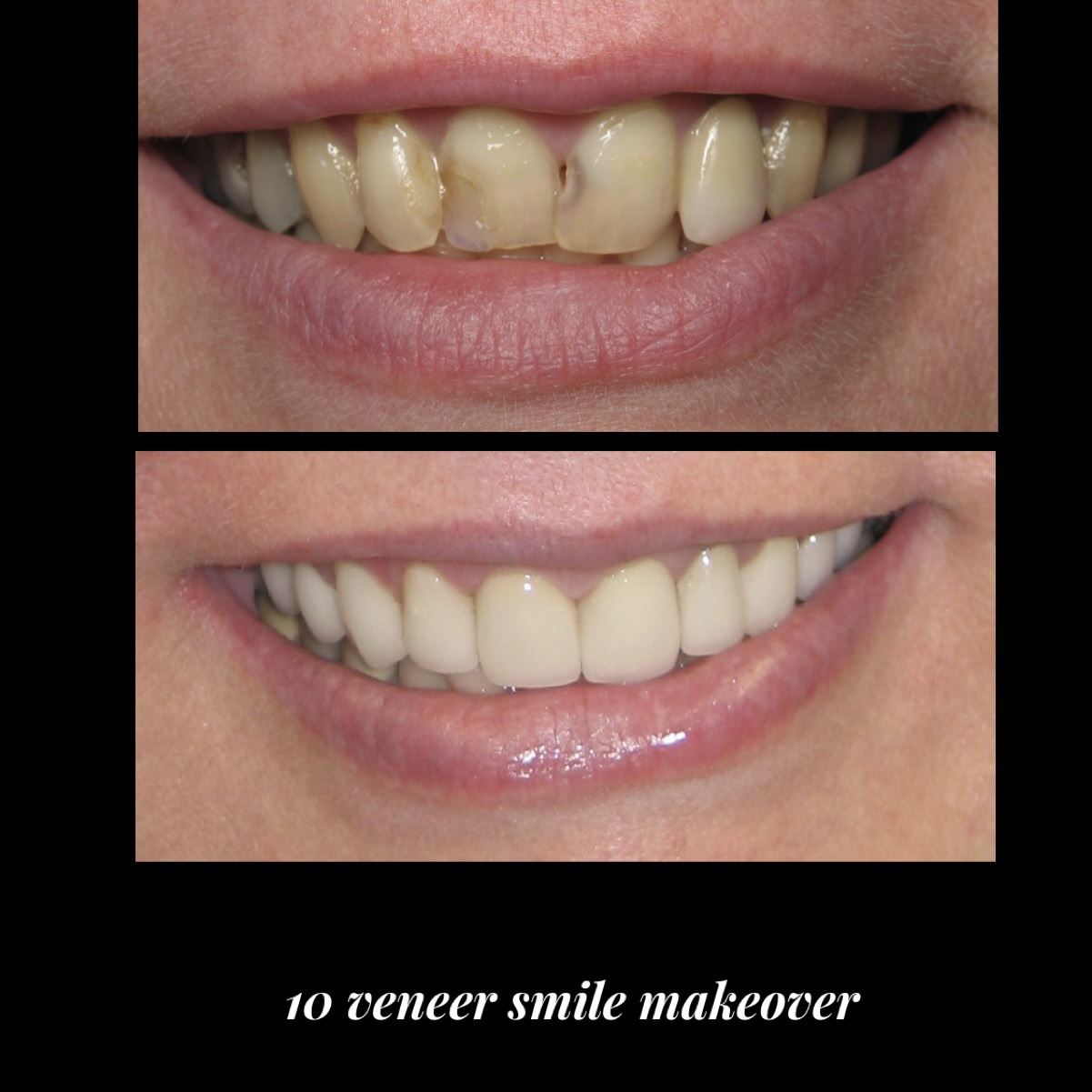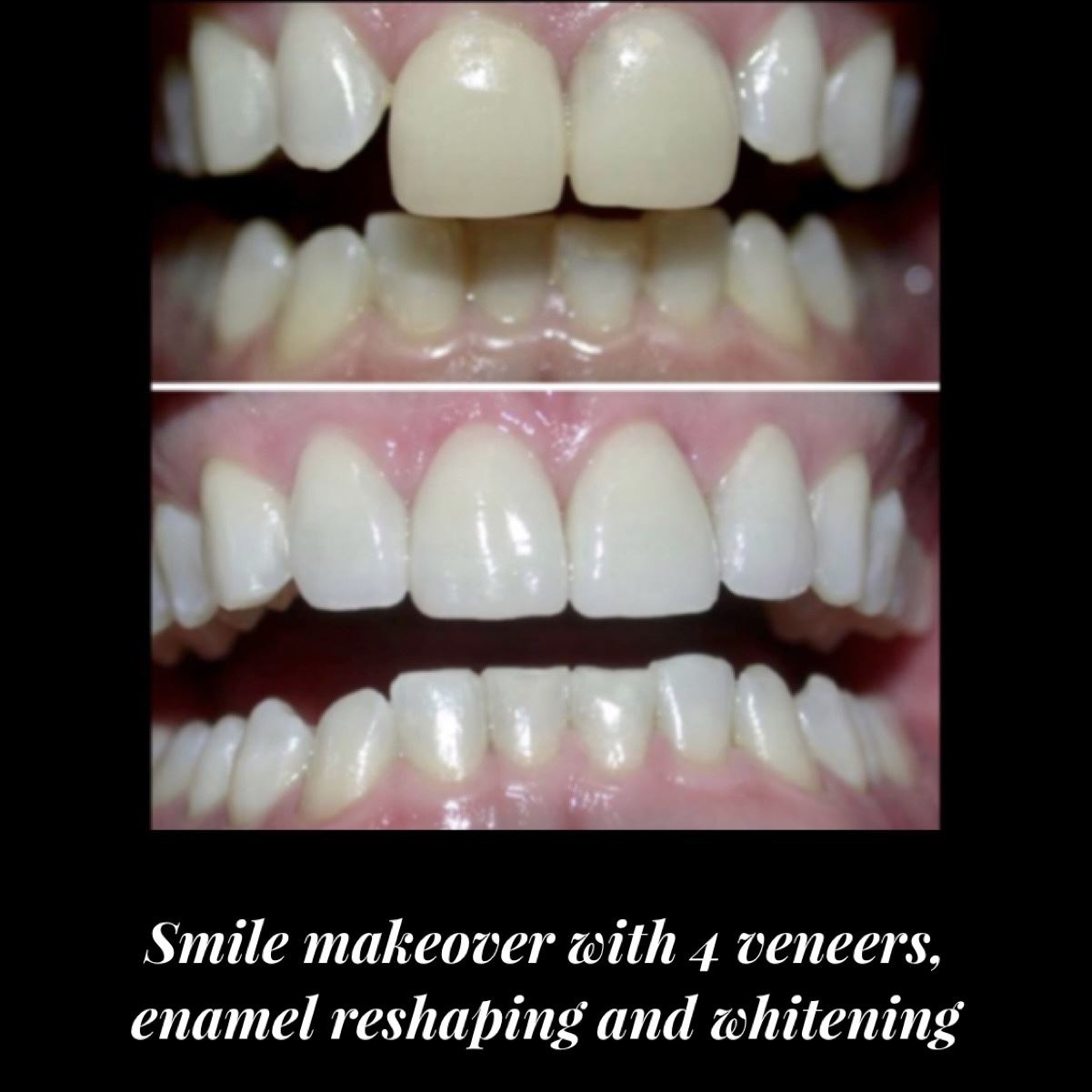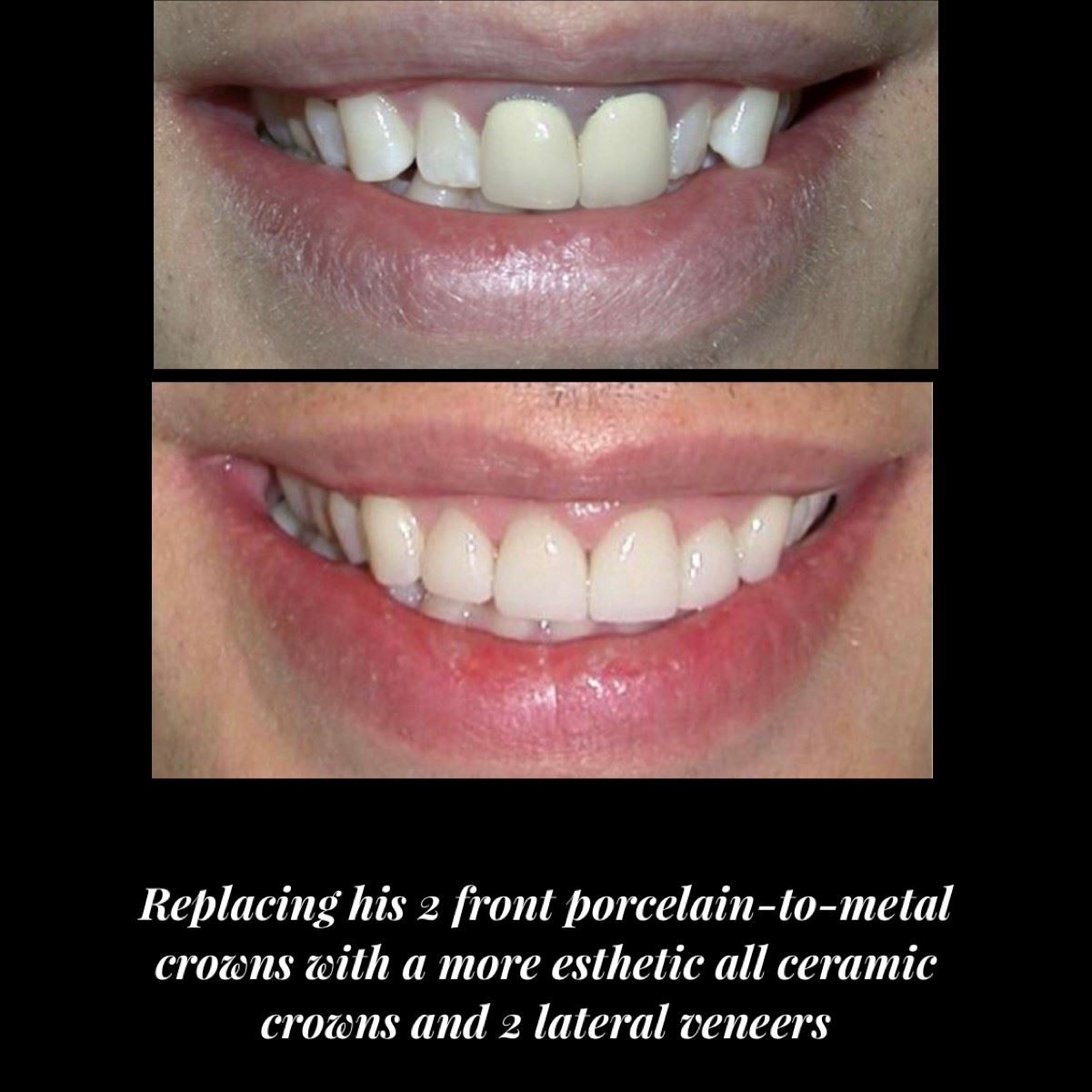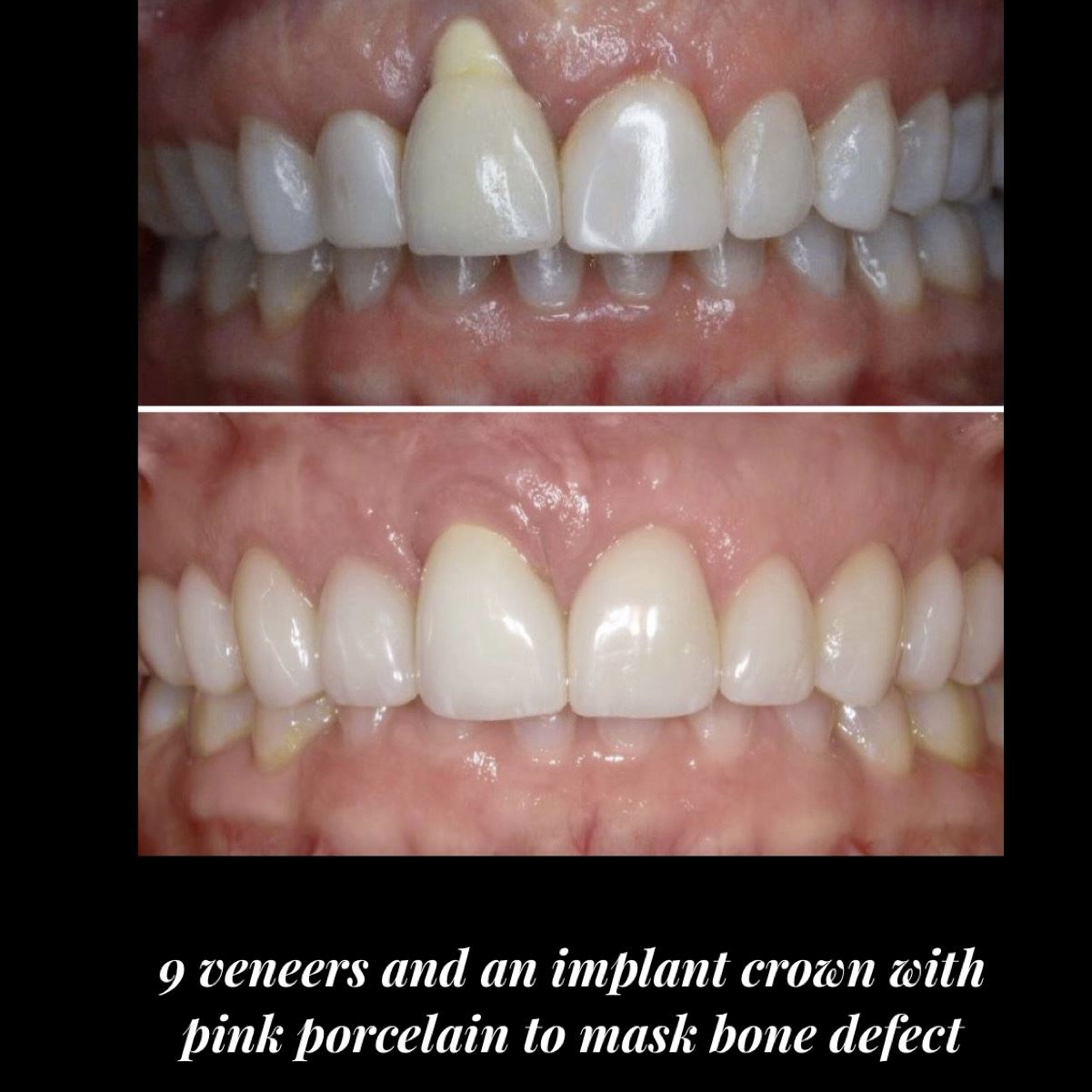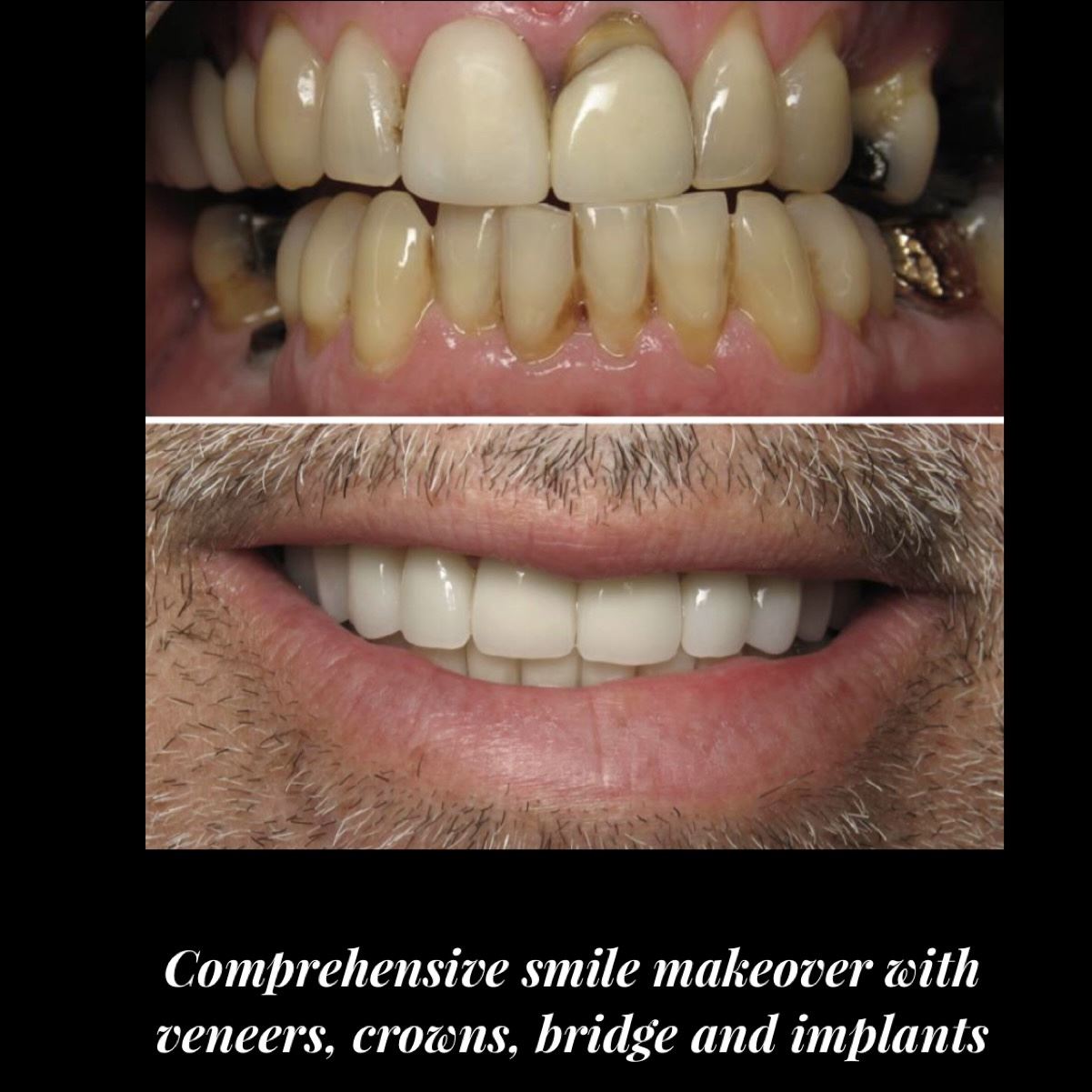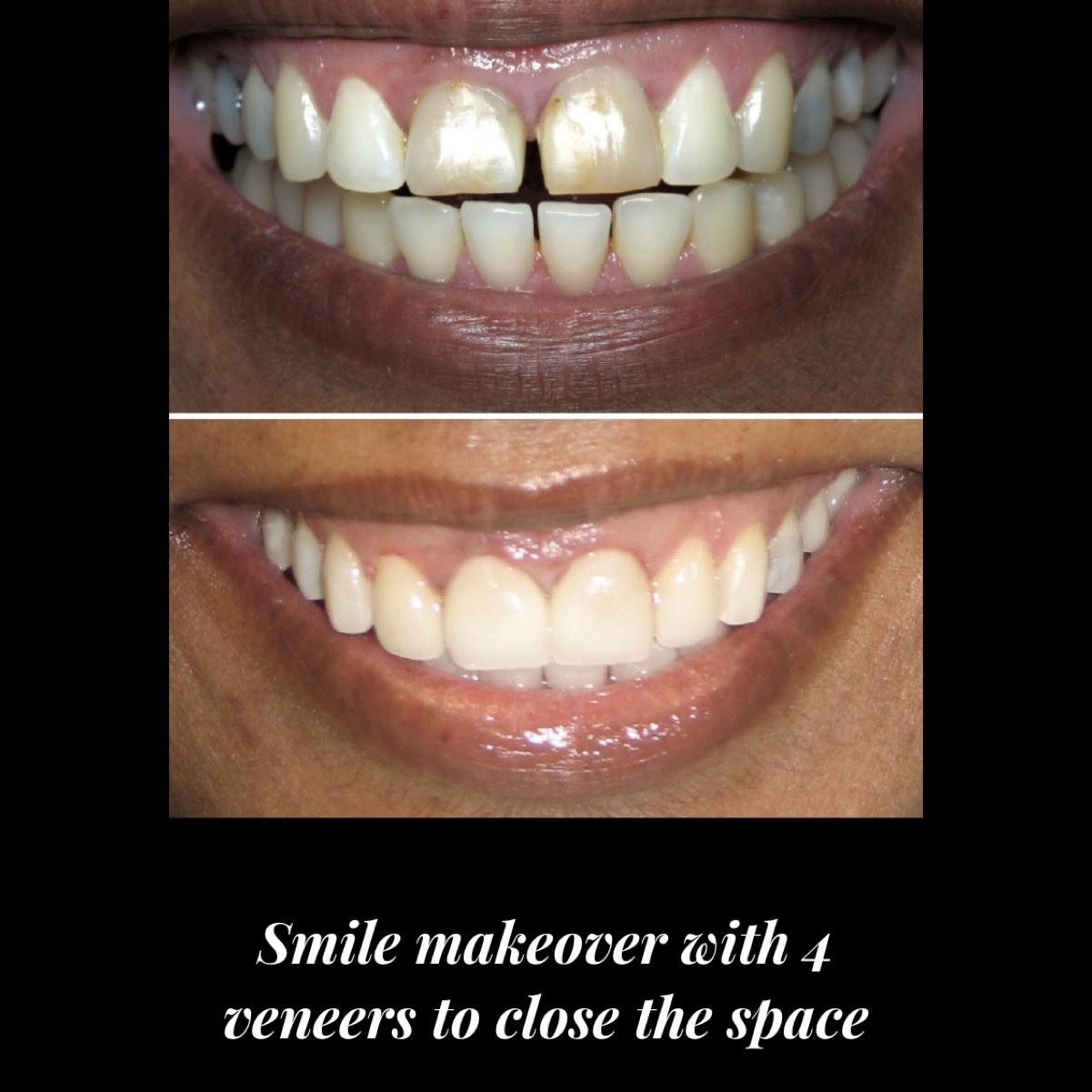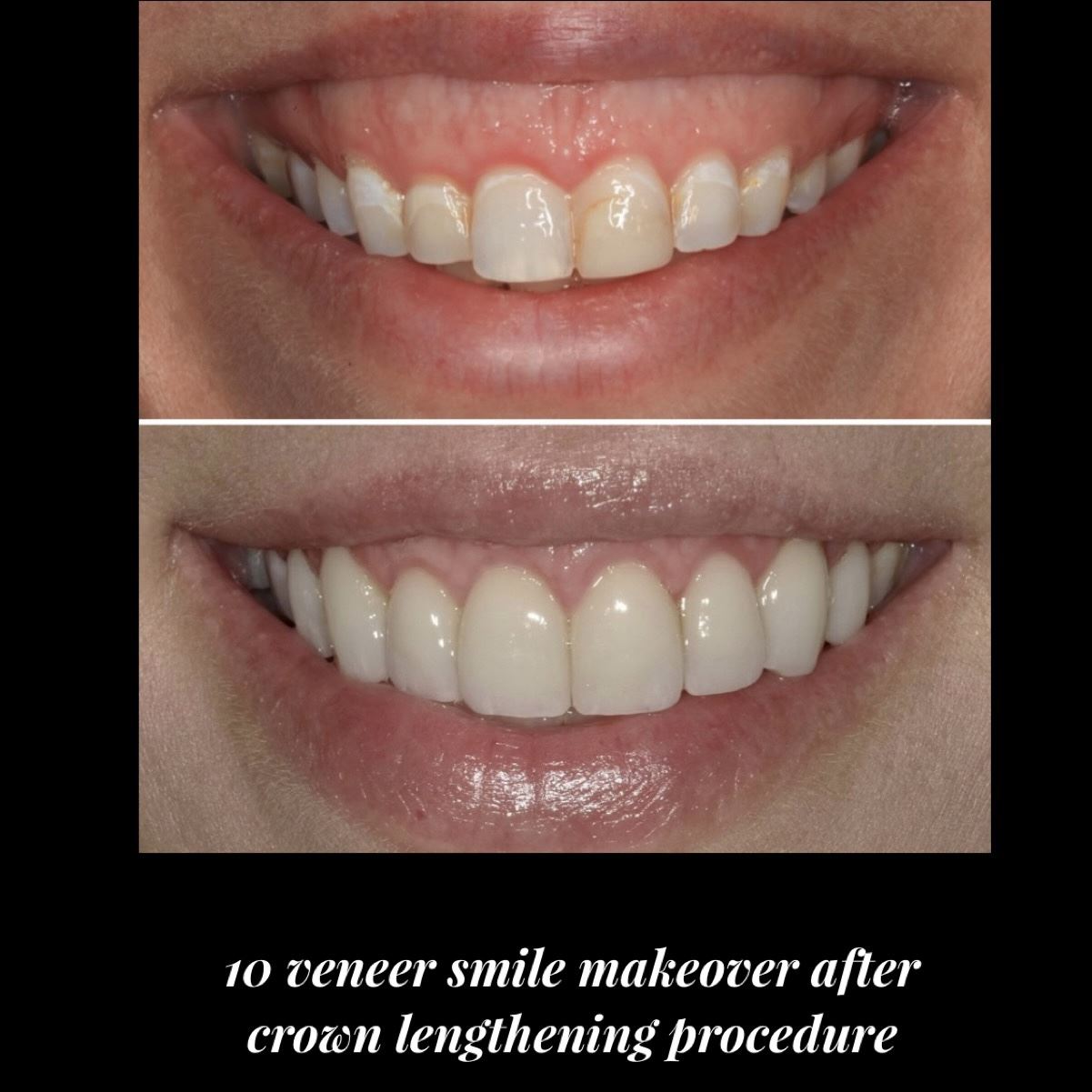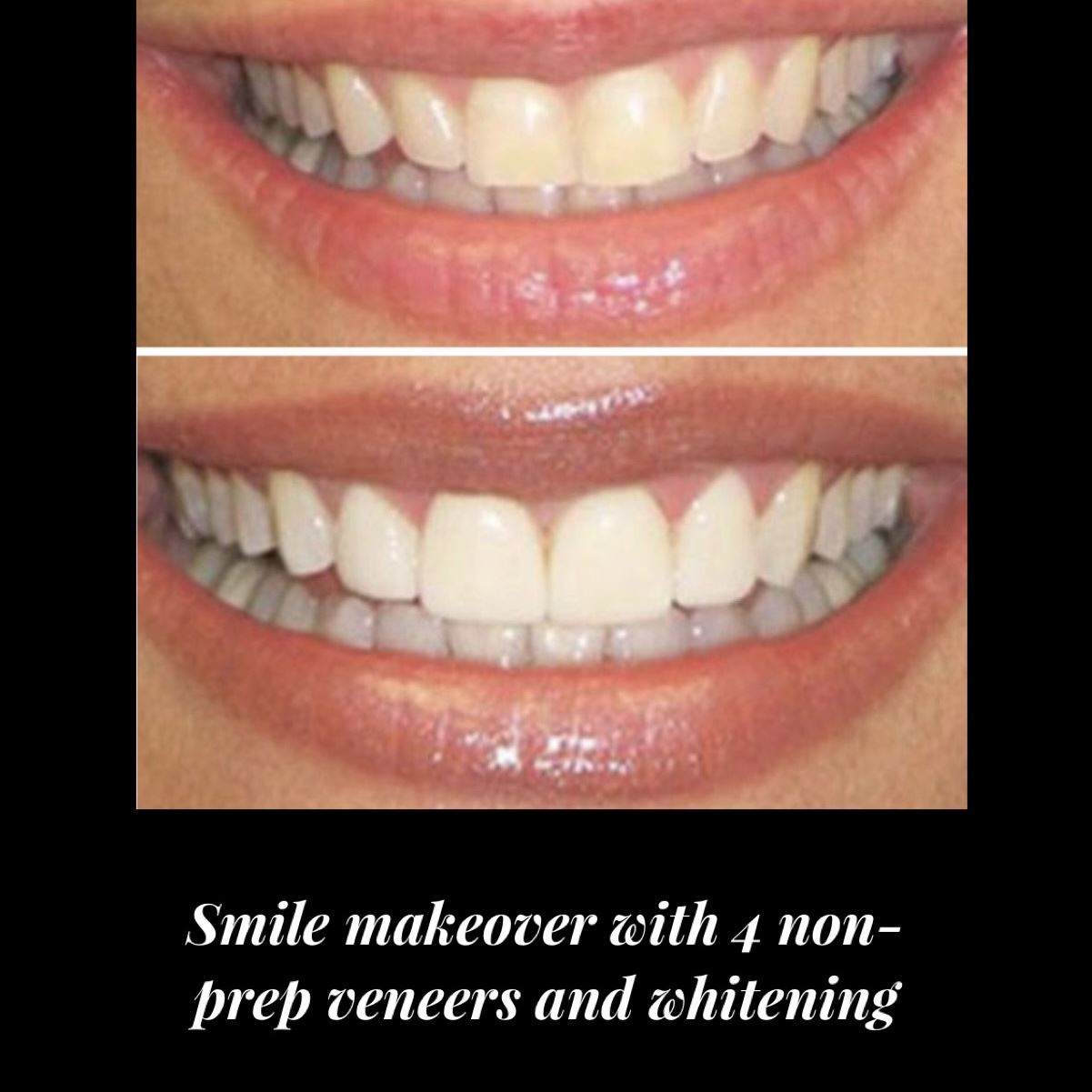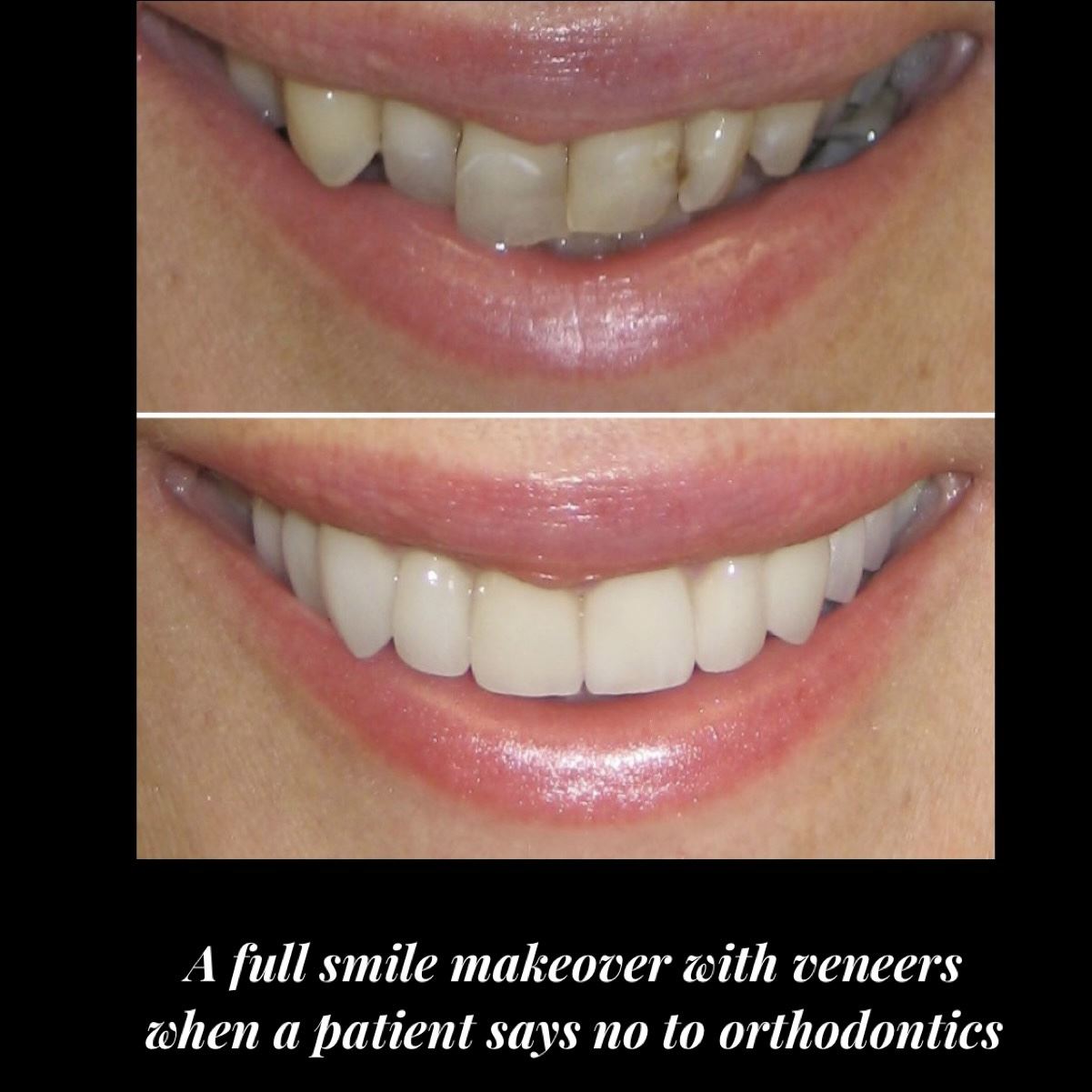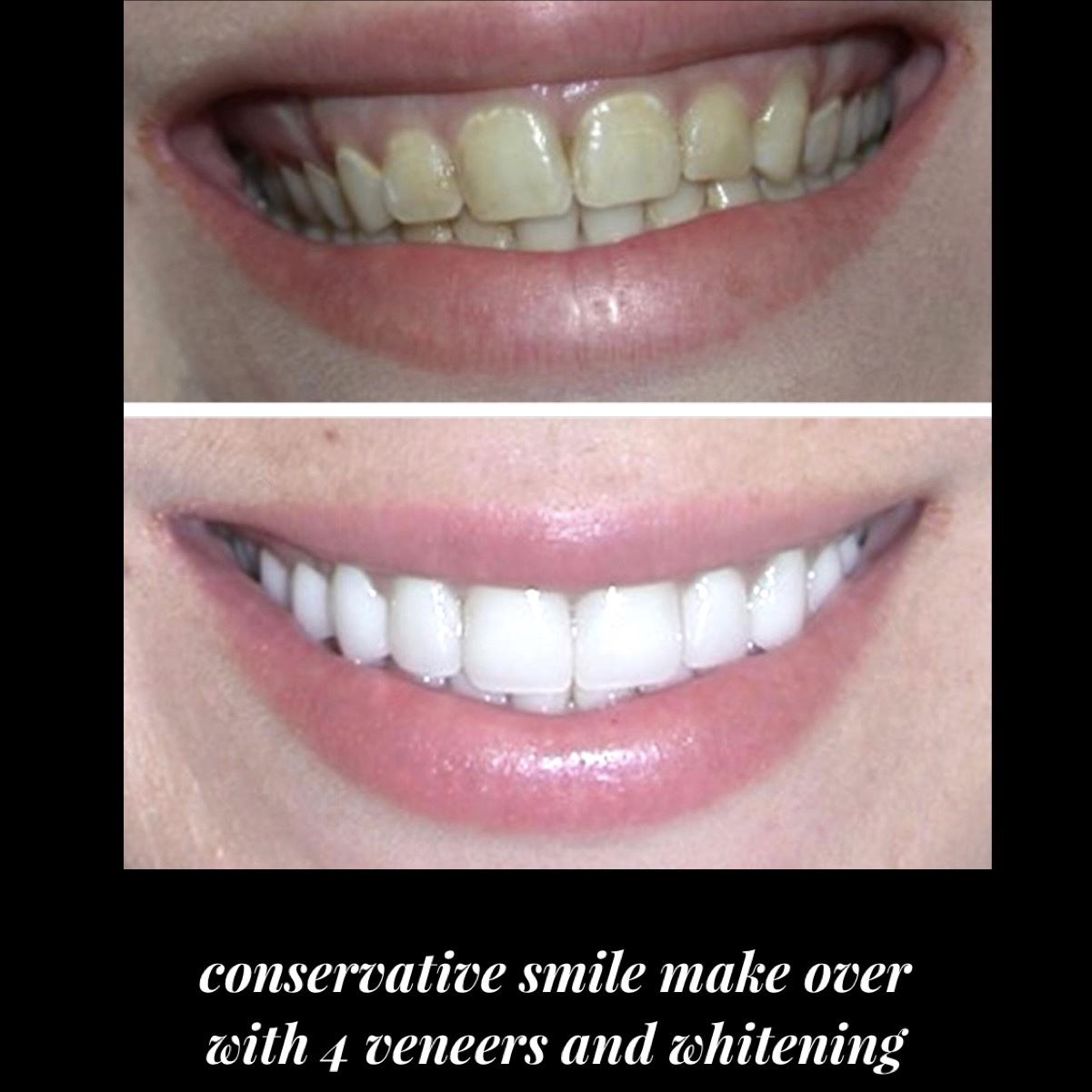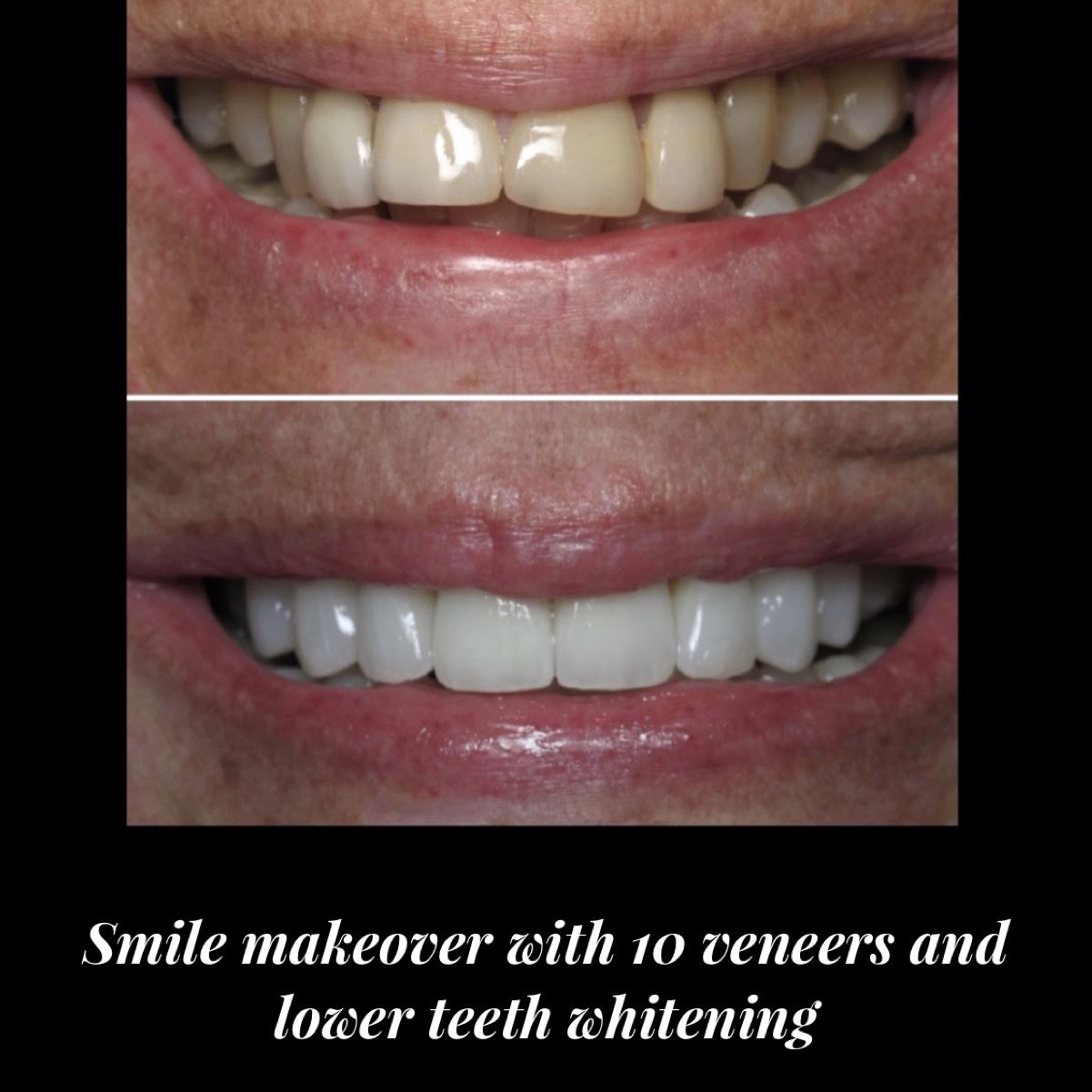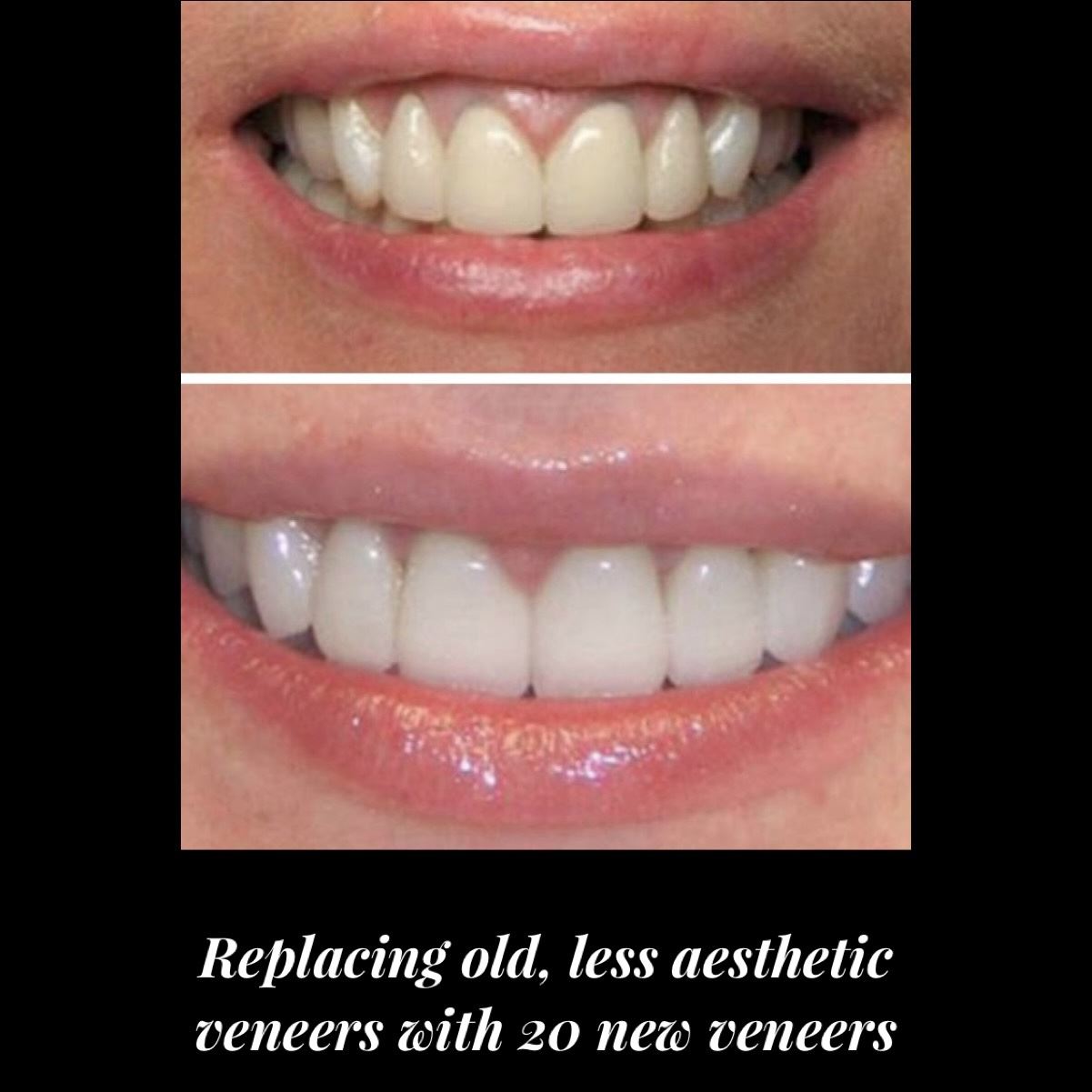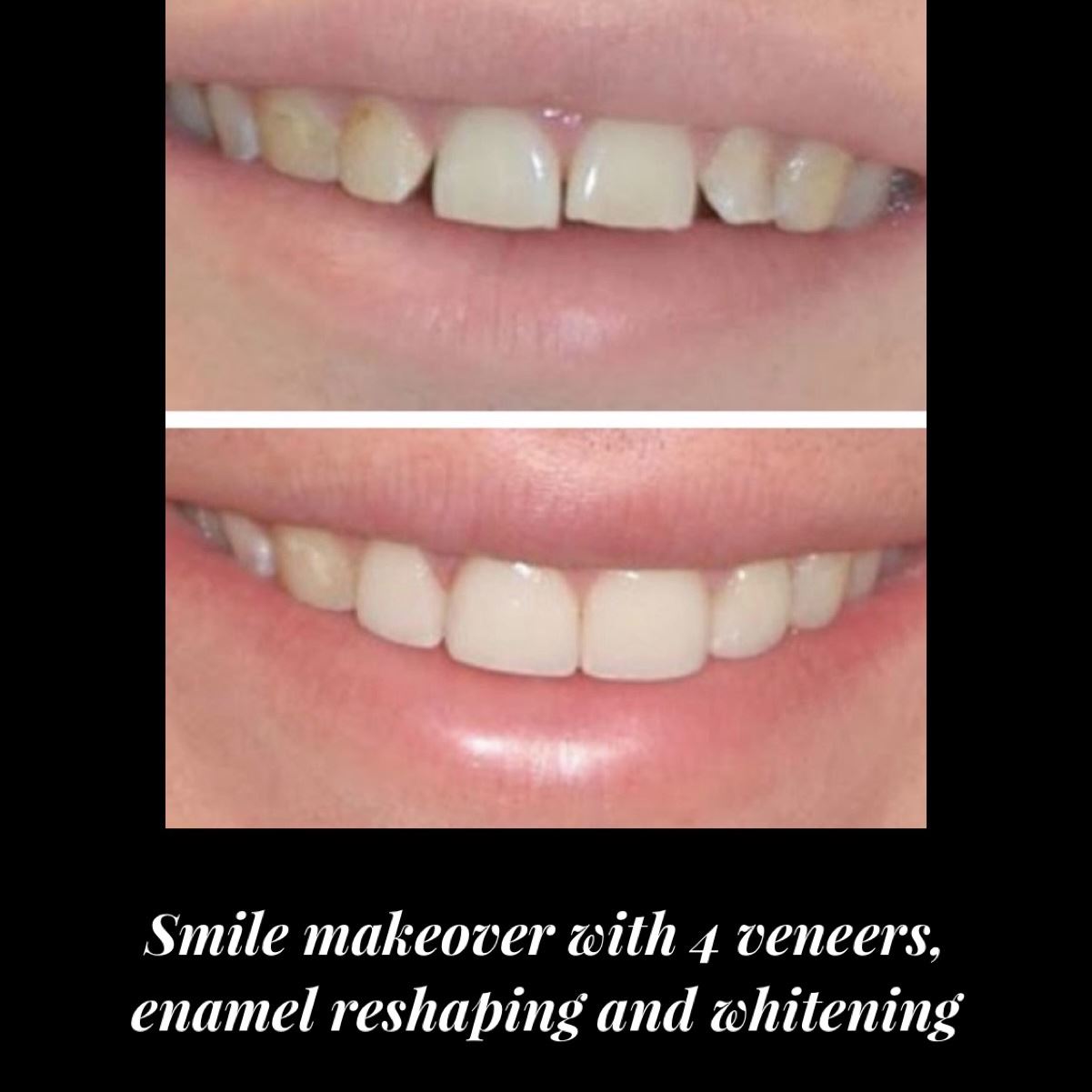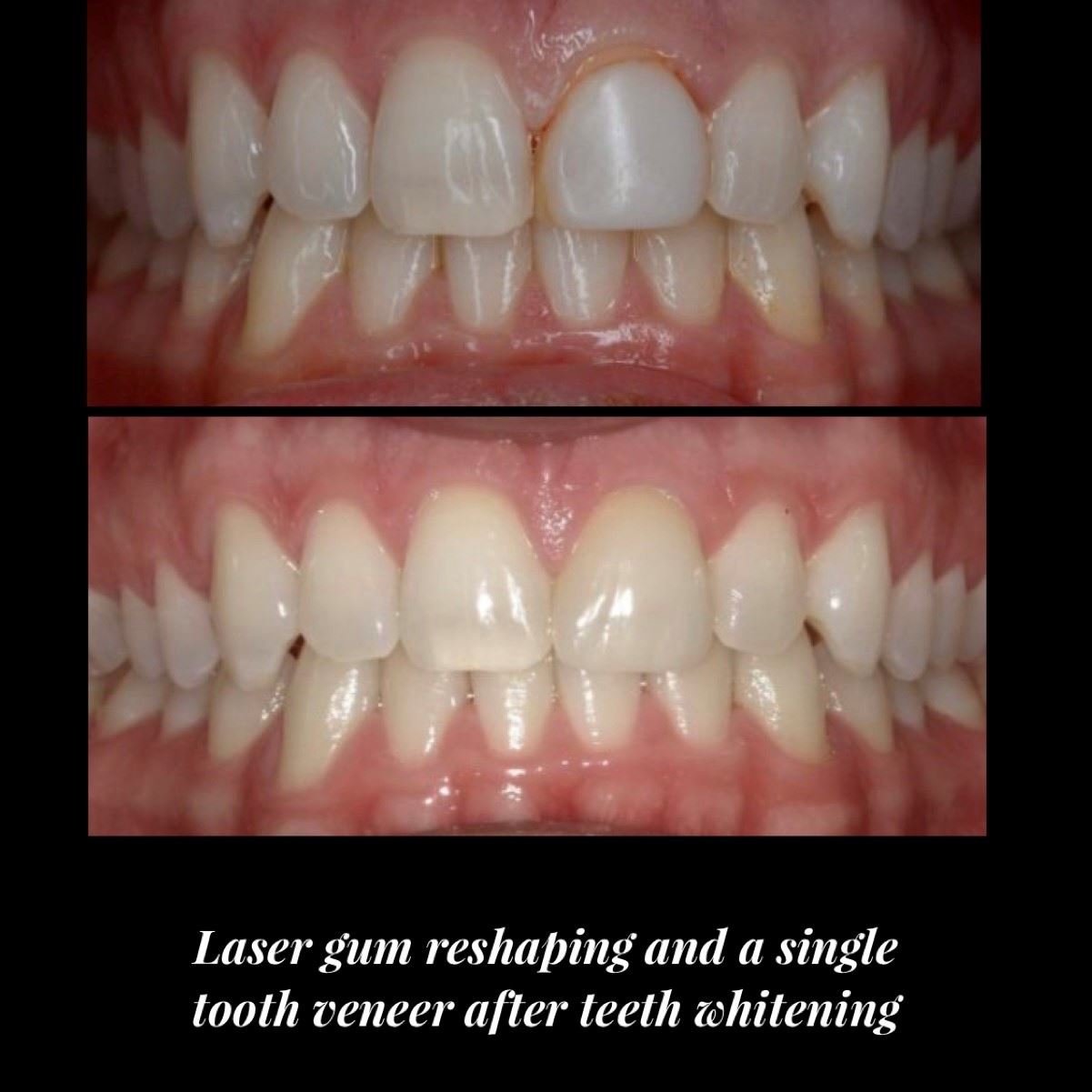
Porcelain Veneers in New York City
Serving Midtown East, Upper East Side & Surrounding Areas
What Are Dental Veneers?
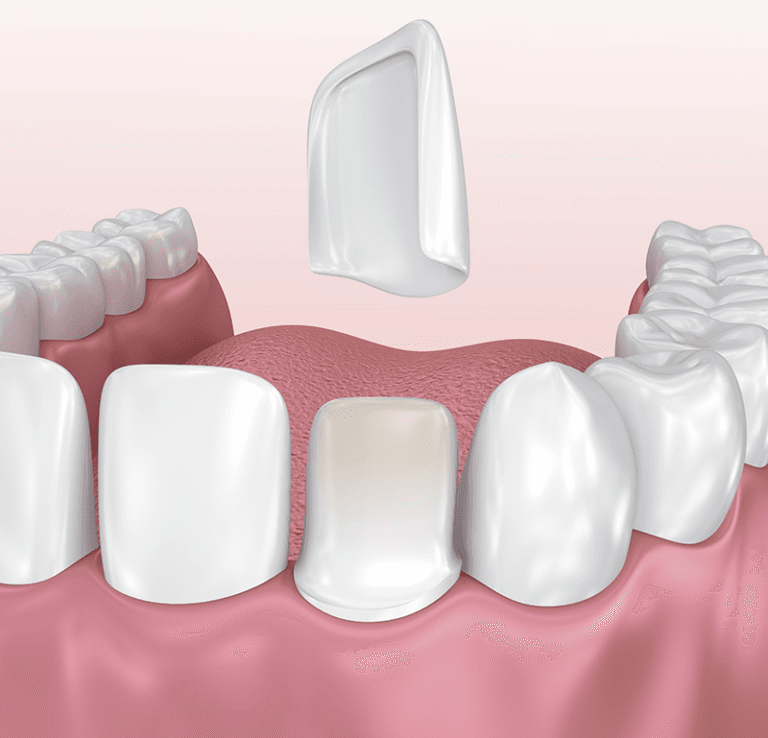
By using a person’s own teeth as a blueprint, a dental practitioner can fit the mouth with dental veneers (also called porcelain veneers) to create a natural-looking smile. It can improve a variety of dental concerns in a fraction of the time required for other dental treatment options like orthodontia or surgery. Porcelain veneers not only enhance a person’s looks and smile, but they can also positively impact oral health.
Veneers are hard, tooth-shaped outer coverings crafted from porcelain that are adhered to the front surface of the teeth to create enhanced cosmetics. Each veneer is customized from a mold of the patient’s teeth, offering the perfect merge between art and science during the procedure.
Dr. Lazare can create a new look by modifying the individual tooth shape, size, color, and its position within the mouth during the veneer-fitting process.
Contact the professionals at Marc Lazare D.D.S., M.A.G.D. today to schedule an appointment and learn more about our New York City veneers.
Candidates for Porcelain Veneer Placement
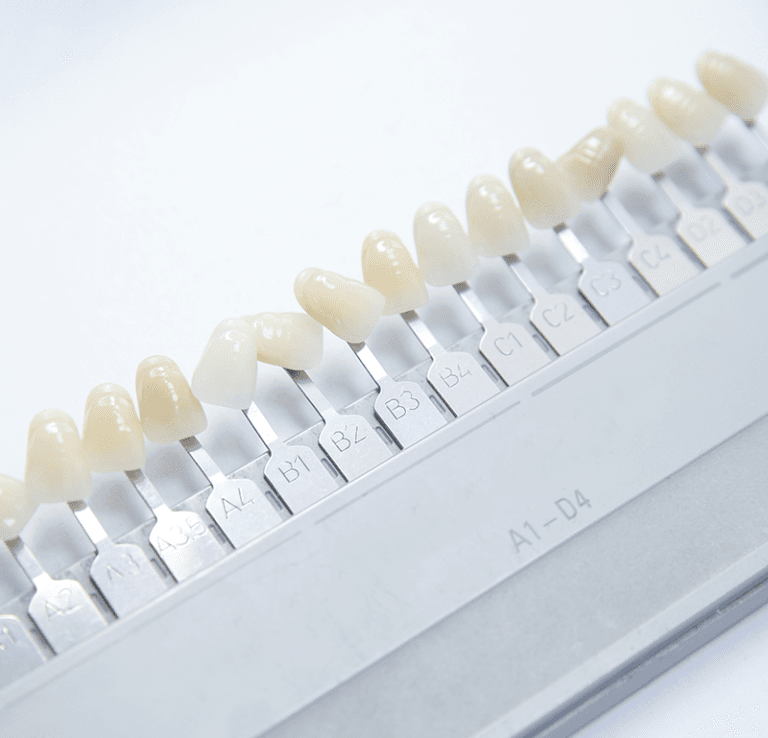
Those interested in undergoing veneer placement must first have their case evaluated through a thorough examination prior to the modification process.
Dr. Lazare can perform cosmetic imaging and would also take dental digital X-rays, collect digital photographs, and create impressions of the mouth, including bite registrations and facebow records.
These steps address the structure and health of the teeth. The original models of a prospective patient’s teeth are then built up in dental wax to determine if the ideal aesthetics can be accomplished with porcelain and how much tooth structure would need to be reduced in order to achieve this improved version.
7 Smile Imperfections That Porcelain Veneers Correct
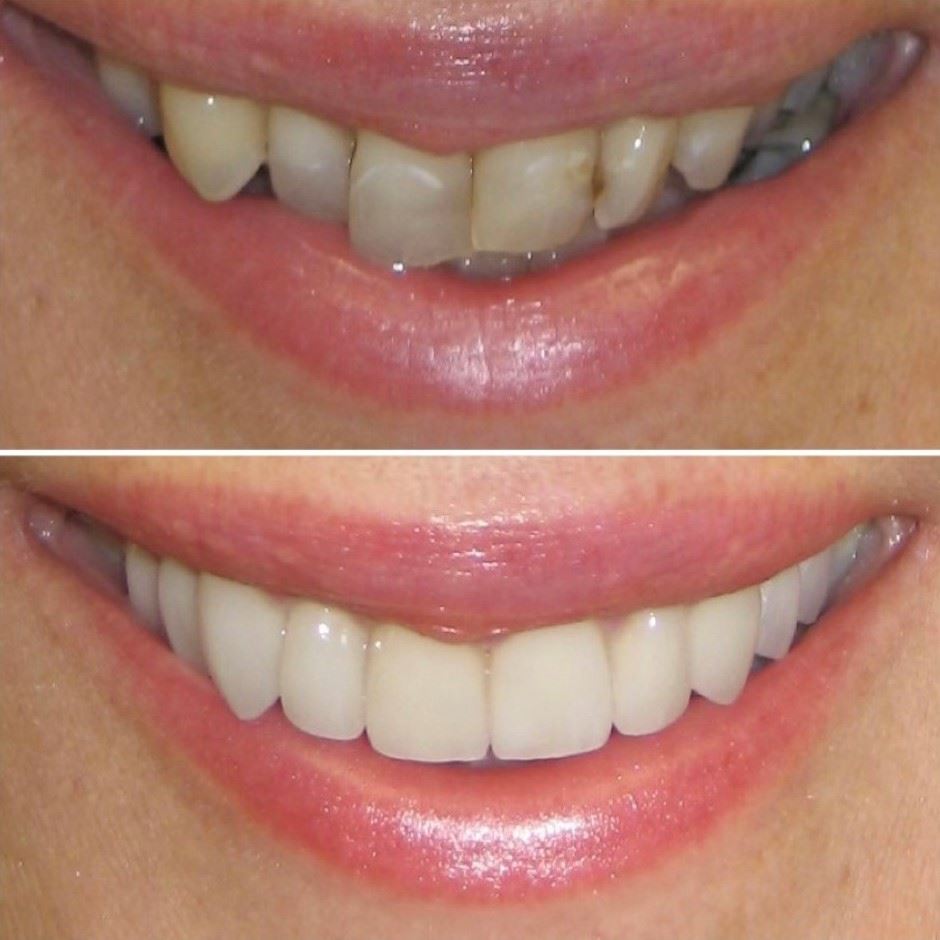
- Helping to brighten up one’s smile
- Discolored teeth due to a root canal, excess fluoride, extensive fillings, or specific types of medications
- Irregularly shaped teeth
- Gaps between teeth
- Tooth surface wear
- Chipped and broken teeth
- Misaligned teeth
After the initial appointment with Dr. Lazare, patients can return for their temporary veneer placements.
The advantage of having temporary veneers custom created is that the patient has the opportunity to make changes to their final dental restorations. They can adjust to speaking and smiling with the new additions and determine if they suit their aesthetic ideals. With patient feedback, Dr. Lazare can make the necessary modifications to complete the placement process. Temporary restorations may not be necessary with minimal tooth preparation for traditional veneers. Within a couple of weeks after the first visit, the veneers are bonded onto the prepared teeth and polished and adjusted.
How Are Teeth Prepared for Veneers?
Step 1: Prior to the final fitting, Dr. Lazare will prepare the surface of the teeth. In some instances, no enamel is removed to prepare for veneers, and in others, minimal preparation or more is needed depending on the position of the tooth within the arch and what is trying to be accomplished. Typically, about one-half millimeter is necessary for the new permanent placements, an amount that will be replaced by the thickness of the veneer.
Step 2: After the teeth have been prepared, Dr. Lazare can submit the impressions of the teeth to the master ceramist at his dental laboratory that will use this guide to expertly craft the realistic porcelain veneers, which will appear in the shape and color of natural teeth. It can take two to three weeks before the patient’s veneers are completed in most cases, and some patients will opt to wear temporary veneers during this time. However, for those who are flying in from other cities or countries or those who are on a time schedule, we can arrange with our lab to have the veneers made within a day or two if necessary.
The porcelain veneer placement process will vary slightly depending on which type of material the patient opts to have placed. In a traditional veneer fitting, local anesthetic injections are provided prior to the procedure for patient comfort, although the process may not require this step in some cases (depending on how much enamel needs to be removed).
Step 3: Next, the veneer is placed on top of the tooth for a try-in so Dr. Lazare can create final modifications to the model before it is cemented to the tooth. Each tooth to be veneered is thoroughly cleaned, and some etching marks will be created to help the material adhere to the tooth. Differently colored bonding agents help to achieve the correct color for a uniform look. After each porcelain veneer has been bonded, the dentist will use a special curing light to harden the material for permanent fixation.
Step 4: Once this process has been completed, Dr. Lazare will use dental tools to scale away any extra bonding material and floss between the teeth to ensure the patient will be able to maintain good oral health. He will also assess the patient’s new bite to ensure the new additions are a natural fit. Dr. Lazare may ask patients to schedule follow-up visits, so patients have time to adjust to their newly shaped teeth and provide feedback on how they feel.
Frequently Asked Questions
Do porcelain veneers require special care?
- Porcelain veneers do not require special maintenance, but it is important to practice good oral hygiene, including regular brushing and flossing, and to avoid habits such as biting hard objects or teeth grinding to prevent damage to the veneers.
Are porcelain veneers reversible?
- Porcelain veneers are considered an irreversible dental treatment since a small amount of enamel is often removed during the preparation process. It's essential to discuss the long-term commitment with a dentist before deciding to get veneers.
Can I eat normally with porcelain veneers?
- Yes, porcelain veneers are strong and durable. While it is advisable to avoid biting hard objects or using the teeth to open packages, you can generally enjoy a regular diet after getting porcelain veneers.
How long do porcelain veneers last?
- With proper care and maintenance, porcelain veneers can last anywhere from 10 to 15 years or even longer. Regular dental check-ups and good oral hygiene practices are essential for prolonging their lifespan.
Transform Your Smile with Porcelain Veneers
If you're looking to enhance the appearance of your smile, porcelain veneers can be a fantastic option. These thin, custom-made shells are designed to cover the front surface of your teeth, improving their color, shape, size, or length. At Marc Lazare D.D.S., M.A.G.D., we specialize in creating beautiful and natural-looking smiles using porcelain veneers.
Benefits of porcelain veneers include:
- Instantly corrects a variety of dental imperfections, such as discoloration, chips, or gaps
- Custom-made to match the shape and color of your natural teeth
- Durable and stain-resistant
- Minimally invasive procedure with little to no discomfort
- Long-lasting results that can dramatically improve your self-confidence
Contact our office to schedule a consultation and learn more about how porcelain veneers can transform your smile.
Contact the office at (332) 334-8290 to schedule an appointment and learn more about our New York City veneers.


Frequent Porcelain Veneers Questions
-
Is There a Way to Fix Crowded and Crooked Front Teeth Without Having to Wear Braces?Yes, there are a few ways to correct your smile without having to wear braces or retainers. Among your options are Porcelain Veneers and Enamel Shaping. In mild cases of crowding, the more conservative approach is Enamel Shaping, which involves modifying the shape of your teeth by removing or contouring enamel to create the illusion that your teeth are more balanced in their appearance. This process does not require anesthesia, and the results are noticeable immediately. Keep in mind that the removal of enamel is an irreversible process, and may also require additional bonding to enhance the appearance of your teeth. Porcelain Laminate Veneers, in my opinion, are the restoration of choice to correct poorly shaped or slightly crooked teeth for those individuals who do not wish to experience orthodontics.
Veneers are thin, custom-made shells made of tooth-colored materials which are bonded to the prepared teeth to enhance the esthetics of one’s smile. This, too, is an irreversible process because a small amount of enamel is usually removed to accommodate the thickness of the porcelain shell. Dental Veneers are used, with tremendous success, for treating gaps and dark spaces between teeth, for teeth that are stained, and for teeth that are worn or eroded at the gum line due to hard tooth brushing.
Many of the actors and entertainment personalities who appear to have “picture perfect” teeth have used porcelain veneers as a more permanent way to whiten and straighten their teeth. The procedure usually requires 2 or 3 appointments, and the results will make a dramatic difference in the way you look and feel about yourself. -
What Types of Dental Veneers Are Available?As a pioneer in modern dental innovations, Dr. Lazare provides patients with the best option available for cosmetic veneer placement: Porcelain veneers are created with materials produced by a number of different dental labs, whereas Lumineers are patented by Denmat, a dental company. The Lumineer material is ultra-durable, crafted from feldspathic porcelain and strengthened with the addition of leucite crystals. Both traditional veneers and Lumineers can be created to be extremely thin (about the thickness of a contact lens), but in their creation, there is no compromise on strength once bonded into place. A cosmetic dentist can comfortably place Lumineers or even traditional veneers without administering anesthetic injections to the patient, but only if the tooth was not significantly prepared. Usually, some local anesthetic is required to ensure patient comfort. In some instances, the patient will not require temporary veneers, although when trying to change the size, shape and look of the teeth it is recommended to have temporaries made so that the patient can try on a preview and give feedback before the final restorations are made. With Veneers or Lumineers, one can have a completely customized set of teeth in about two visits. While Lumineers are a nice alternative for some patients, Dr. Lazare is partial to the aesthetic benefits of traditional veneers customized and layered by his Master Ceramist. This option creates the most natural beautiful smile that you could ever hope for.
-
Do Dental Veneers Ruin Your Teeth?No, adding veneers to your natural teeth will not ruin them. In fact, veneers can actually protect your natural teeth from damage. This is especially true if you have fragile or weakened teeth.
Leaving fragile teeth unprotected could result in them breaking, chipping, or cracking unexpectedly. Not only can this be unsightly, but it can also be painful. By adding veneers, you can strengthen your teeth and give yourself a healthy, bright smile. Another advantage that comes with adding veneers is that they can resist stains. That means that you can drink coffee, red wine, or other dark liquids and not have to worry about your teeth yellowing or turning gray from the beverages.
Veneers are a great option if you’re looking for a way to improve your smile and make your teeth as strong as possible. -
Who Is the Ideal Candidate for Dental Veneers?The ideal candidate for dental veneers is someone who exhibits worn teeth, shorter or smaller teeth, inwardly positioned teeth (which can stand to be bulked out a bit), and spacing between their teeth that they would like to close. Additionally, the ideal candidate would select a shade that is similar to the natural color of their teeth, especially if tooth preparation is not indicated or desired and the porcelain needs to be thin. Most people are better candidates for traditional veneers, although porcelain veneers are a nice option for those who fit the above criteria. Either way, you are just a couple of visits away from a perfect smile.
-
What Are the Disadvantages of Dental Veneers?Proper case selection is extremely important with veneers as not all people are ideal candidates. Unless a patient’s teeth are very small and inclined inward, the added material may cause the obvious appearance of added bulk. The material of dental veneers is the thickness of a contact lens, which may be a disadvantage when a patient is seeking to rid one or more teeth of discoloration. In order to make dark teeth appear very white, a certain thickness of porcelain is required. When teeth are already in the ideal position, any additional porcelain would appear unnaturally thick. While anesthesia may not be necessary, extensive tooth reduction to create proper alignment could be painful. Porcelain veneers are a great option for select candidates.
-
Going to the dentist is never something I look forward to. Finally, I found a dentist who is kind, thoughtful, and I always understand what has been done. The office is beautiful and his staff is so nice and helpful. Thanks, Dr. Lazare!
- Sara
to Get Started? Call Us at 332-334-8290 or Schedule Your Next Visit
-
Monday: 8am - 5pm
-
Tuesday: 8am - 5pm
-
Wednesday: 10am - 7pm
-
Thursday: 8am - 5pm
-
Friday: 8am - 5pm
-
Saturday: 9am - 6pm
-
Sunday: Closed


